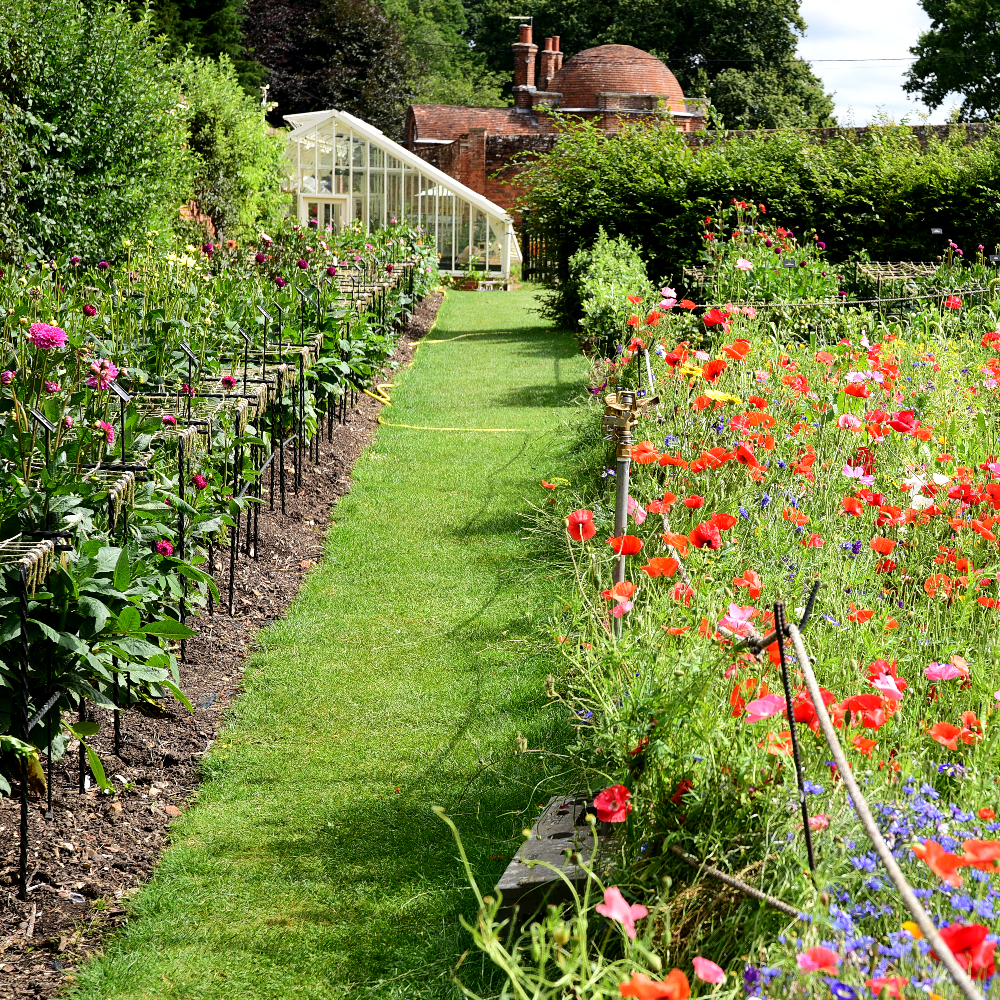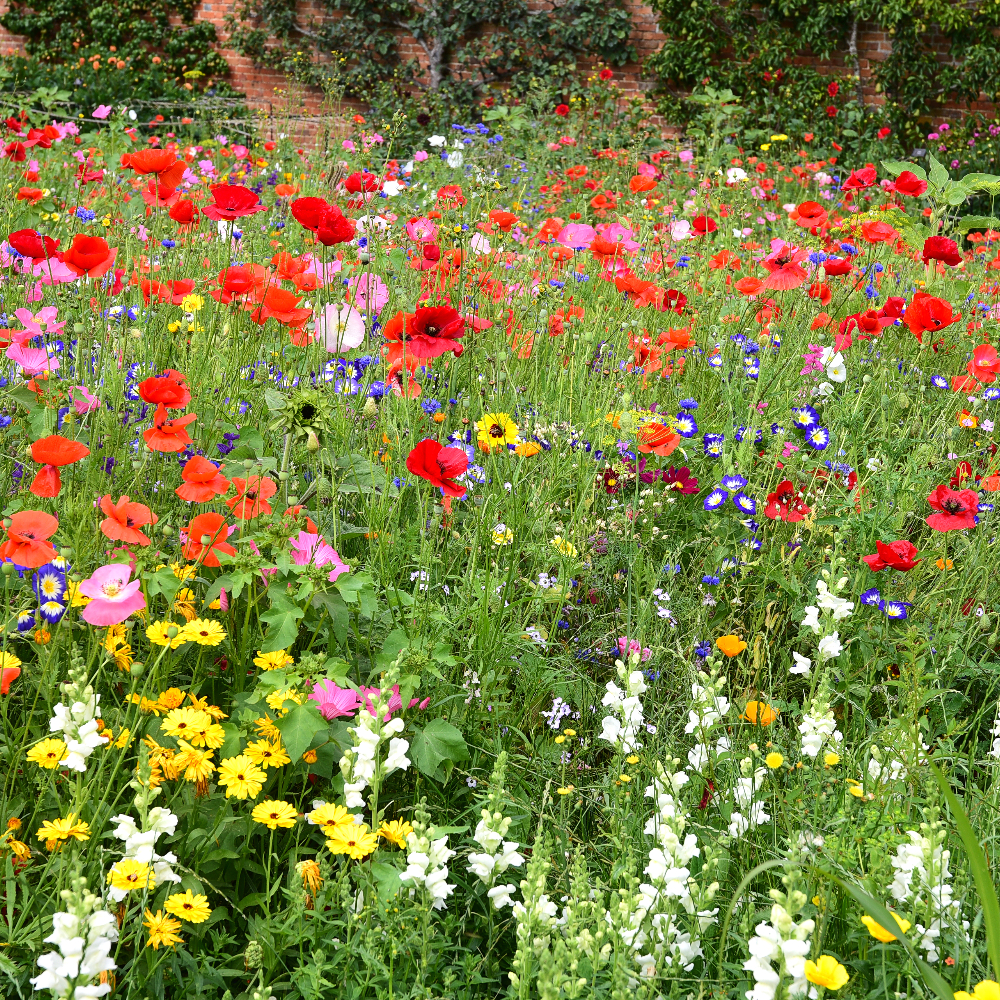The Vyne's Wildflower Garden
The wildflower meadow in the walled garden at The Vyne was born out of need rather than just desirability - there just weren’t enough pollinators to go round. And we all know now that pollinators are needed not just for flowers but for a most of our fruit and vegetables as well.
This is the first year of the planting which is a mixture of annuals and perennials. They are all grown from seed, some sown in situ and others started in the greenhouse and planted out once they’d grown on a bit.
I saw them at the end of July and they looked fantastic. My mother told me they looked even better a couple of weeks earlier but it’s hard to see how. They’ve even stood up well in the record-breaking temperatures of mid-July and the subsequent heavy downpours.
Flowers attract pollinators by offering them pollen and nectar in exchange for fertilisation by travelling from flower to flower. Specific flower types are rich in one or the other or both, and some flowers offer nothing.
Very generally speaking the closer a flower is to its wild beginnings the better it is for nectar and pollen, which is why wildflowers are so beneficial. However, there are also lots of more cultivated varieties which still have something to offer.
Poppies and cornflowers are native wildflowers and pollinators love them. But they also like snapdragons, cosmos and marigolds, none of which are native to the UK. Different shaped flowers attract different types of pollinators; there's a good explanation here - https://www.foxleas.com/flower-shapes.asp.
Flower colour also has a role to play in attracting pollinators. It’s well-known that bright blue flowers attract honeybees and other species have preferences for other colours and scent as well; the scientific research can be read here - https://www.nature.com/articles/srep24408.
Of course we’ve got used to knowing which wildflowers are at their best in high summer, but spring, autumn and even some winter flowering plants are just as important for pollinators - https://www.gardenersworld.com/plants/10-plants-to-help-bees-through-winter-into-spring/.
Although all pollinators are good for our crops and flowers, some are more equal than others. The honeybee can pollinate 80% of our flowers, fruit and vegetables. And almost all honeybees are domesticated, ie they live in hives.
The plight of the British honeybee has been well documented in recent years but the popularity of bee-keeping is helping to check and even reverse this trend. If you’re attracted to the idea of keeping bees get in touch with the British Beekeepers Association - https://www.bbka.org.uk/Pages/Category/what-we-do.
We arrived at The Vyne shortly after opening and I recommend going early to avoid the crowds. The coffee’s not bad and the queue is manageable earlier in the day. However, you do risk the icecream shop not being open…
Despite growing up near here I’ve never been in the house.
The Vyne - https://www.nationaltrust.org.uk/the-vyne
Buy wildflower seeds online - https://wildseed.co.uk/










